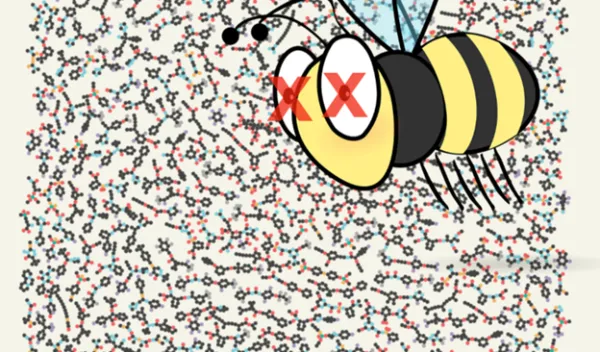
Researchers develop computer model to predict whether a pesticide will harm bees
Researchers at Oregon State University have harnessed the power of artificial intelligence to help protect bees from pesticides.
Cory Simon and Xiaoli Fern led the project, which involved training a machine learning model to predict whether proposed new herbicides, fungicides or insecticides would be toxic to honeybees based on the compound's molecular structure.
The findings of the U.S. National Science Foundation-supported study, published in The Journal of Chemical Physics, are important because many fruit, nut, vegetable and seed crops rely on bee pollination. Without bees to transfer the pollen needed for reproduction, almost 100 commercial crops in the United States would vanish. Bees' annual global economic impact is estimated to exceed $100 billion.
"Pesticides are widely used in agriculture, which increase crop yield and provide food security, but pesticides can harm off-target species like bees," Simon said. "And since insects, weeds, etc. eventually evolve resistance, new pesticides must continually be developed, ones that don't harm bees."
The team, including Ping Yang and Adrian Henle, used honeybee toxicity data from pesticide exposure experiments involving nearly 400 different pesticide molecules to train an algorithm to predict whether a new pesticide molecule would be toxic to honeybees. "The model represents pesticide molecules by the set of random walks on their molecular graphs," Yang said.
A random walk is a mathematical concept that describes any meandering path, such as on the complicated chemical structure of a pesticide, where each step along the path is decided by chance, as if by coin tosses.
Imagine, Yang said, that you're out for an aimless stroll along a pesticide's chemical structure, making your way from atom to atom via the bonds that hold the compound together. You travel in random directions but keep track of your route, the sequence of atoms and bonds that you visit. Then you go out for a stroll along a different molecule, comparing the series of twists and turns to what you've done before.
"The algorithm declares two molecules similar if they share many walks with the same sequence of atoms and bonds," Yang said. "Our model serves as a surrogate for a bee toxicity experiment and can be used to quickly screen proposed pesticide molecules for their toxicity."
Added Christina Payne, a program director in NSF's Directorate for Engineering, "The team's random walk approach is a creative way to efficiently map out and compare molecular structures so they can be used as input to machine learning models. The work demonstrates the power and flexibility of machine learning models when small but high-quality datasets, such as the bee pesticide toxicity data, are available."
